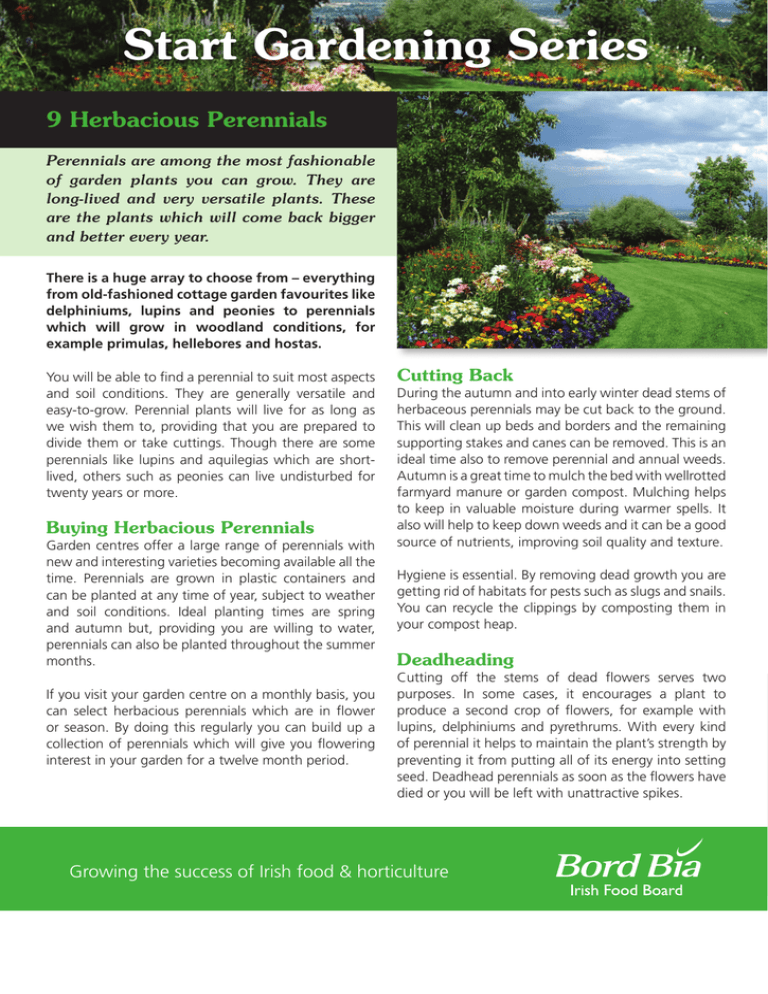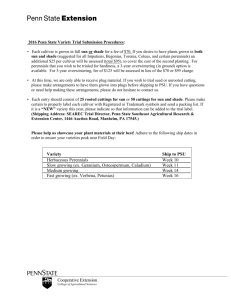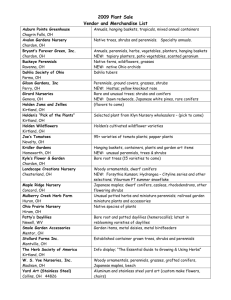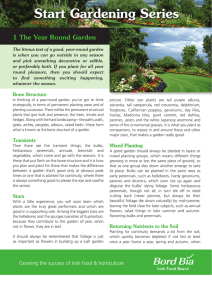Start Gardening Series 9 Herbacious Perennials
advertisement

Start Gardening Series 9 Herbacious Perennials Perennials are among the most fashionable of garden plants you can grow. They are long-lived and very versatile plants. These are the plants which will come back bigger and better every year. There is a huge array to choose from – everything from old-fashioned cottage garden favourites like delphiniums, lupins and peonies to perennials which will grow in woodland conditions, for example primulas, hellebores and hostas. You will be able to find a perennial to suit most aspects and soil conditions. They are generally versatile and easy-to-grow. Perennial plants will live for as long as we wish them to, providing that you are prepared to divide them or take cuttings. Though there are some perennials like lupins and aquilegias which are shortlived, others such as peonies can live undisturbed for twenty years or more. Buying Herbacious Perennials Garden centres offer a large range of perennials with new and interesting varieties becoming available all the time. Perennials are grown in plastic containers and can be planted at any time of year, subject to weather and soil conditions. Ideal planting times are spring and autumn but, providing you are willing to water, perennials can also be planted throughout the summer months. If you visit your garden centre on a monthly basis, you can select herbacious perennials which are in flower or season. By doing this regularly you can build up a collection of perennials which will give you flowering interest in your garden for a twelve month period. Cutting Back During the autumn and into early winter dead stems of herbaceous perennials may be cut back to the ground. This will clean up beds and borders and the remaining supporting stakes and canes can be removed. This is an ideal time also to remove perennial and annual weeds. Autumn is a great time to mulch the bed with wellrotted farmyard manure or garden compost. Mulching helps to keep in valuable moisture during warmer spells. It also will help to keep down weeds and it can be a good source of nutrients, improving soil quality and texture. Hygiene is essential. By removing dead growth you are getting rid of habitats for pests such as slugs and snails. You can recycle the clippings by composting them in your compost heap. Deadheading Cutting off the stems of dead flowers serves two purposes. In some cases, it encourages a plant to produce a second crop of flowers, for example with lupins, delphiniums and pyrethrums. With every kind of perennial it helps to maintain the plant’s strength by preventing it from putting all of its energy into setting seed. Deadhead perennials as soon as the flowers have died or you will be left with unattractive spikes. Growing the success of Irish food & horticulture Start Gardening Series 9 Herbacious Perennials Protecting A few common perennials are not completely hardy and may succumb to frost in cold areas in winter. Examples include agapanthus, penstemon and osteospermum. As a precaution protect such plants during winter with a layer of straw, enclosing and securing this with netting. Soil Preparation Once you have chosen your planting site, remove perennial weeds and destroy them. Ideally you should dig the soil well in advance of planting, allowing it time to settle. Add well-rotted farmyard manure or garden compost afterwards. Before planting it can be helpful to mark the intended positions with twigs. Use a trowel or spade depending on the size of the root or container. Set your plants in groups of three or five rather than individually and do not be tempted to plant them too closely together. By planting in groups you will achieve a greater impact. Garden centres offer many organic feeds which can be applied as dressings at the appropriate time of year. Using your own rotted garden compost will also feed and improve the quality of your soil at the same time. Feeding can make an enormous difference to the quality of the perennials you grow. Feeding Watering Early spring is an ideal time to give established perennials a general balanced feed. Sprinkle the fertiliser evenly around the plant at approximately 60g to the square metre. This is a general rule and it is important to follow the instructions given on the pack. If this is the first application to newly planted perennials, generally a little more can be given. Supporting Perennials are best grown in continuously moist soil. This should be maintained during dry spells. One of the best ways to water perennials is to use a perforated or leaky hose. Also, mulching perennials in late spring helps to conserve moisture. Tall perennials, for example delphiniums, can flop easily without support. Wind can play havoc. Proprietary support systems can be bought but three or four bamboo canes with string tied between them are a simple, reliable method. Supports should be put in place while the plants are only half grown, with the bamboo canes angled slightly outwards. These will soon be hidden. Growing the success of






